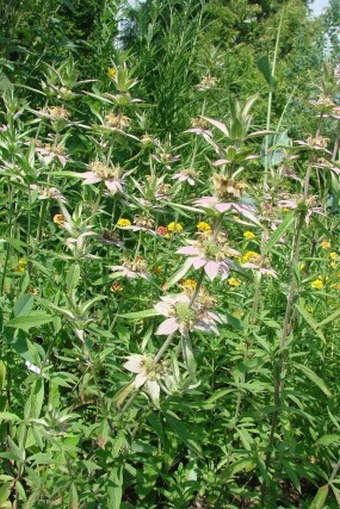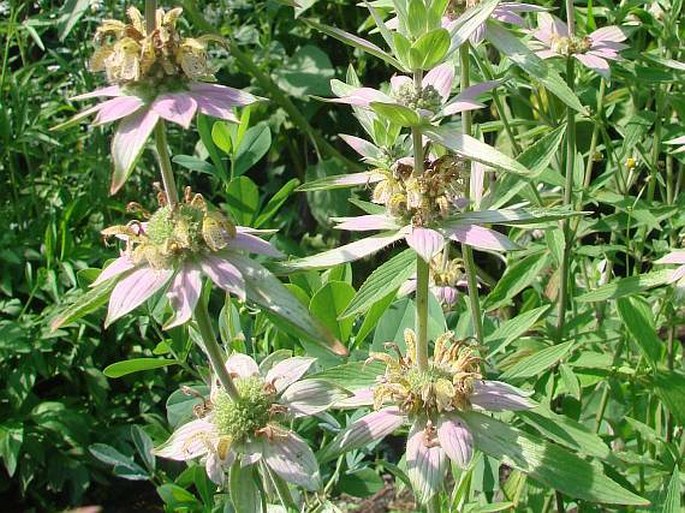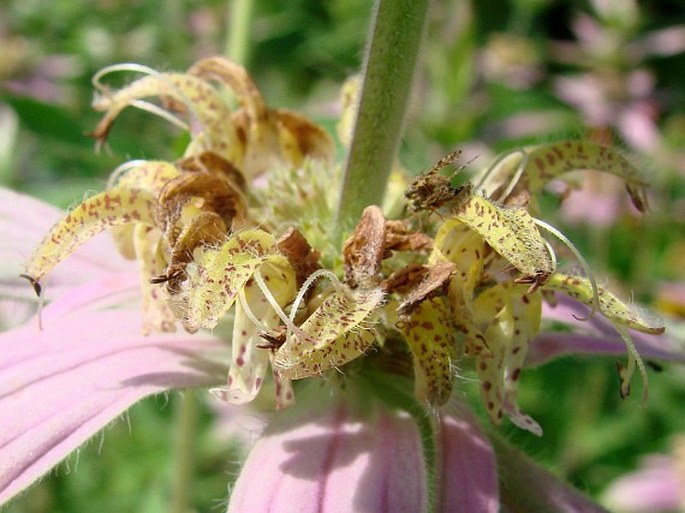Family: Lamiaceae Martinov

Distribution: Eastern part of North America – from Connecticut to Minnesota and Mexican state of Tamaulipas, from Ontario to Florida.
Ecology: It grows in forest edges, prairies, meadows and fields, also in disturbed habitats, along railroads and roadsides. Blooms from June to July.
Description: Perennial herb, 60–100(–120) cm tall. The stem is erect, branched, green to reddish purple, 4-angled, densely pubescent. Leaves opposite, petiolate, lanceolate, to 4.5 cm long and 1 cm wide, serrate. Flowers arranged in head-like cymes, 2–5 per stem, subtended by large, whitish, purple-tinged bracts; tubular calyx with 5 triangular teeth; cream-colored corolla with purple spots, two-lipped, c. 18 mm long. The fruits are small nutlets.
Threat and protection: States of Ohio and Pennsylvania list this species as endangered.
Use: Native tribes made a tea from the leaves of this plant to treat flu, colds and fever.
Spotted Beebalm is perfect for the wild or meadow garden, it is tolerant of dry conditions. This plant is attractive to bees and butterflies.
Note: Genus name honors Spanish physician, Nicolás Monardes (1493–1588).





These images were taken in culture – Czechia, Botanic Garden Teplice (July 26, 2014).


